People sleep peacefully when they feel protected, just as we use computers with ease because of Windows Defender.
It detects and blocks malware files, blocking exploits, network-based attacks, and phishing sites. But when Windows Defender fails to start, it’s natural to feel anxious and worried.
In this article, I’ll provide ways to fix the Windows Defender not turning issue and protect you from threats. So, let’s begin.
How to Fix Windows Defender Won’t Run in Windows 10
Windows Defender is a system program that comes with Windows by default. Any system error or problem can create difficulties in opening the Windows Defender. But you can resolve the issue by updating programs, removing third-party apps, and altering service settings.
Also, there are additional ways to fix the Windows Defender not running problem. Read the following procedures to solve the problem.
Here are the methods to fix the Windows Defender won’t run issue in Windows 10:
1. Check the Date & Time
Many apps depend on the system’s time. If the date and time are incorrect, they start behaving abnormally, and you may face problems running them.
Before jumping to the fix, ensure the correct date and time on your PC. If not, change the time and format in Windows.
2. Uninstall Third-Party Antivirus
Sometimes, a third-party antivirus program conflicts with the Windows Defender and hinders it from opening properly.
Read the steps below to remove all the antivirus software from the PC and see if the problem solves for you.
Here is the method to uninstall third-party antivirus:
- Press the Windows Start button.
- Search App & features.
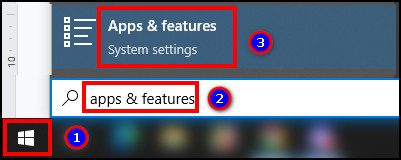
- Click on the Antivirus.
- Press on Uninstall.
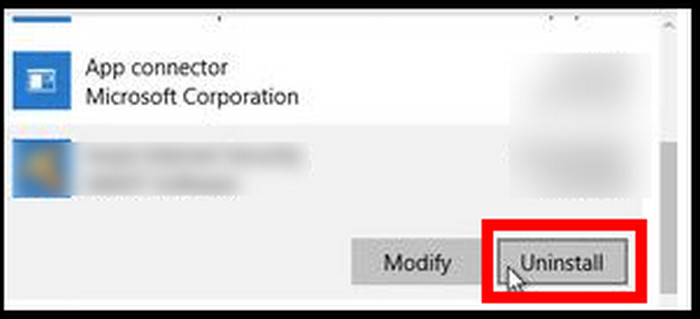
Now, restart your computer and see if the Windows Defender is working correctly.
3. Update Windows Defender
Updating the Windows Defender will install the latest version on your PC. Consider reading the process below to update the Windows Defender and fix the opening issue.
Here is the procedure to update Windows defender:
- Press the Win + X button together.
- Click on Command Prompt (Admin) or Windows Powershell (Admin).
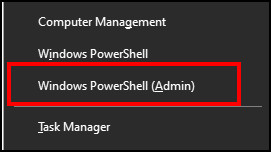
- Type the following commands and press enter.
“%PROGRAMFILES%\Windows Defender\MPCMDRUN.exe” -RemoveDefinitions -All
“%PROGRAMFILES%\Windows Defender\MPCMDRUN.exe” -SignatureUpdate
- Close cmd and restart your PC.
After rebooting your computer, check if the Windows Defender is working properly.
4. Update Windows
Microsoft regularly pushes updates to fix bugs and errors in Windows. Updating the Windows will resolve the issue in Defender and allow you to open the app normally.
Follow the procedures below to learn how to update Windows manually.
Here are the steps to update Windows:
- Click on the Start button.
- Search Windows Update settings.
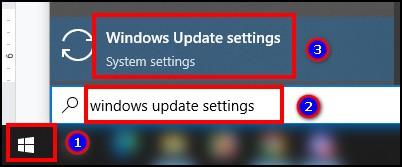
- Press on Check for updates.
- Click on Download and install to update your Windows version.
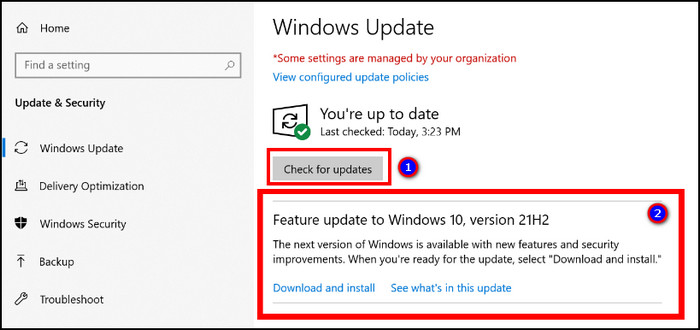
Upgrading to the latest Windows gives an advantage to the system program. It helps to run apps smoothly and provides better security.
If you do not see any update, fix the Windows update not showing up for installing the new version.
5. Restart Security Center Service
Windows Defender needs some services to run properly. If the services stop or aren’t running, Windows Defender will start malfunctioning and won’t open.
You must restart the services in order to fix the problem. Read the following instructions to restart the security center service in Windows 10.
Here is the way to restart the security center service:
- Open the Run dialog box by pressing Windows + R together.
- Type services.msc and click Enter.
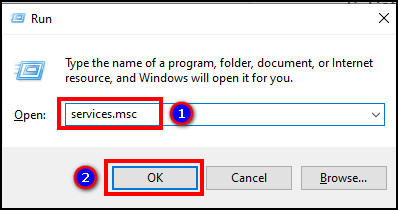
- Find the Security Center and right-click on it.
- Press on Restart.
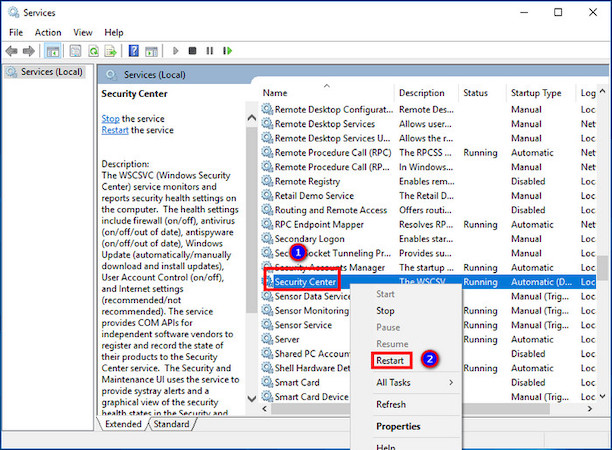
- Reboot your PC.
After opening your PC, go to Windows Defender and check if it’s working well.
6. Set Automatic Windows Defender Service
Usually, Windows Defender starts automatically after opening the PC. You must enable the automatic startup option if the service fails to start.
Opening Windows Defender after starting the PC differs from enabling the startup apps. Consider reading the following instructions to configure the automatic Windows Defender Service.
Here are the steps to set the Windows Defender Service to Automatic:
- Click on Windows + R to open the Run dialog box.
- Type services.msc and press on OK.

- Scroll down and find Windows Defender Antivirus Network Inspection Service, Windows Defender Antivirus Service and Windows Defender Security Center Service.
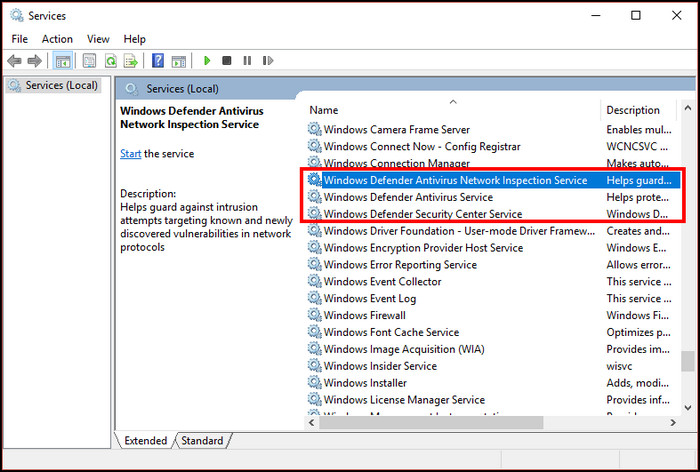
- Double-click on them.
- Press the drop-down menu from Startup type.
- Choose Automatic.
- Press on Start if the service isn’t running.
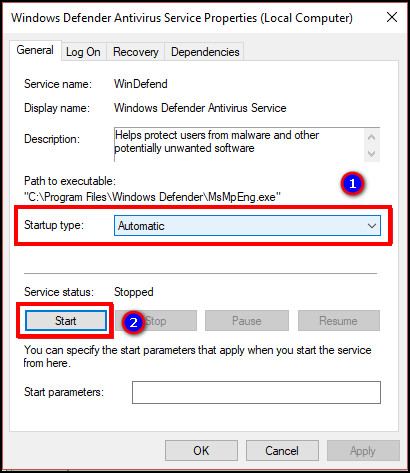
- Click on Apply and then OK.
To check the changes, restart your computer and see if the Windows Defender is opening automatically.
7. Change Group Policy
The Windows group policy configures and manages the system services of your PC. Windows Defender won’t run if it’s turned off from the group policy.
Let me guide you through the group policy customization and enable the settings for Windows Defender.
Here is the process to change the group policy in Windows 10:
- Open the Run dialog box.
- Type gpedit.msc and click OK.
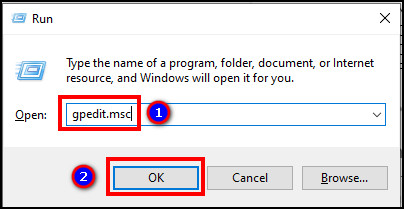
- Expand Computer Configuration.
- Navigate to Administrative Template and click on Windows Components.
- Go to Windows Defender Antivirus.
- Double-click on Turn off Windows Defender Antivirus.
- Choose the radio button beside Not Configured.
- Press on Apply and then OK.
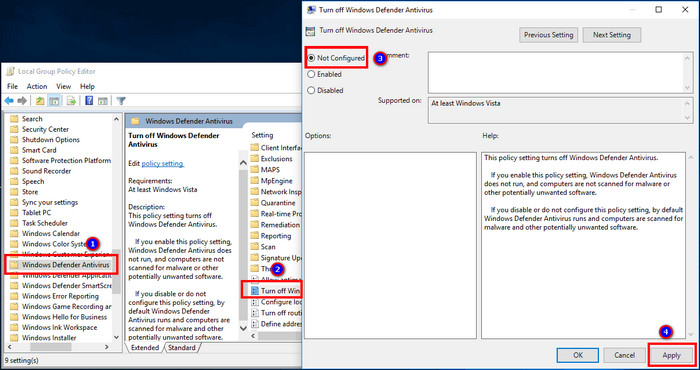
Now, open the Windows Defender and check if it’s opening normally.
8. Run SFC Scan
System files are critical and vital for running your PC smoothly. Any corrupted data can create a problem while opening the Windows Defender.
Most people install Windows on their SSD. But, if you are constantly missing system data, it’s surely concerning. You need to fix the corrupted SSD to run the system and Windows Defender properly.
Follow the steps below to learn how to run the sfc scan and fix the corrupted files.
Here is the procedure to run sfc scan on Windows 10:
- Press the Windows + X button together.
- Open Command Prompt (Admin) or Windows Powershell (Admin).
- Type sfc /scannow and click Enter.
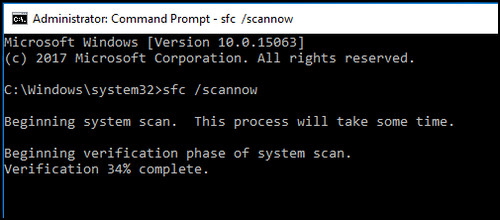
Repairing your drive should resolve all the issues in the system file and run the Windows Defender properly.
But, if you have any source file issue, fix the DISM source file not found error to run the Windows Defender.
9. Modify Windows Registry
Sometimes, Windows Defender may fail to open normally due to issues in Windows Registry. You need to tweak some options in the registry to run the Windows Defender on your PC.
But, Windows Registry is very critical, and any mistake can harm your system. So, it’s better to export the Windows Registry and keep it as a backup.
Once you’re done with the exporting process, follow the procedures below to modify the Windows Registry.
Here are the steps to modify the Windows registry:
- Launch the Run window by pressing Win + R.
- Type regedit and click OK.
- Navigate to HKEY_LOCAL_MACHINE\SOFTWARE\Policies\Microsoft\Windows Defender.
- Open the DisableAntiSpyware key or create one.
- Set the Value data to 0.
- Press on OK.
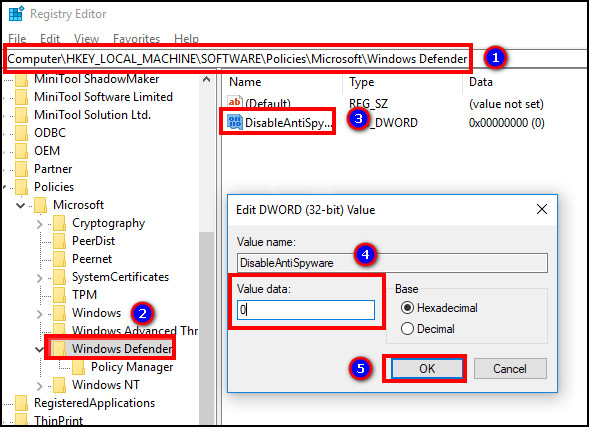
Now, restart your computer and see if the Windows Defender is opening properly.
10. Perform a Clean Boot
During normal startup, many third-party applications can create problems and hinder the opening of many system programs. With the clean boot, you can avoid the third-party apps problem and run the system apps smoothly.
Consider reading the following steps to apply a clean boot on your PC.
Here is the process to perform a clean boot:
- Open the Run dialog box.
- Type msconfig and click OK.
- Go to the General tab and select Selective startup.
- Uncheck Load startup items.
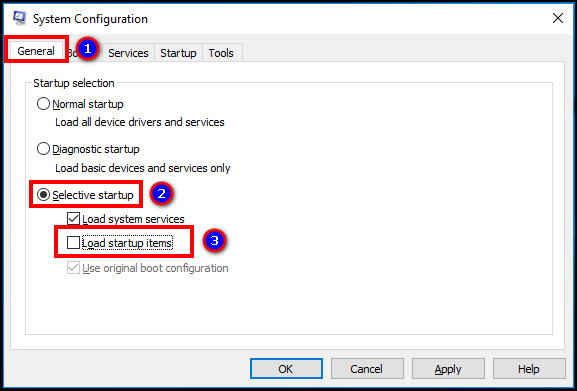
- Navigate to the Services tab.
- Check the Hide all Microsoft services option and press Disable all.
- Click on Apply and then OK.
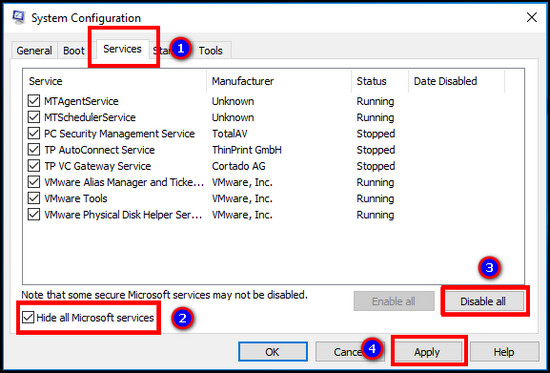
Restart your computer, and see if the Windows Defender is turning on perfectly.
Frequently Asked Questions
How do I enable Windows Defender in Windows 10?
To enable Windows Defender, go to Start > Virus & threat protection > Manage settings > Turn on Real-time protection and Cloud-delivered protection.
Why can’t I open Windows Defender?
You can’t open the Windows Defender because of incorrect time, outdated Windows Defender, old Windows version, third-party apps, and system errors.
How do I know if Windows Defender is turned on?
The Windows Defender is turned on if you see it in Show hidden icons on the system tray.
Wrapping Up
Windows Defender is vital for the real-time protection of your PC. Here, I’ve explained all the methods of resolving the problem while opening the Windows Defender.
Don’t forget to share your thoughts in the comment box below, and I’ll see you in the next article.
Goodbye!




